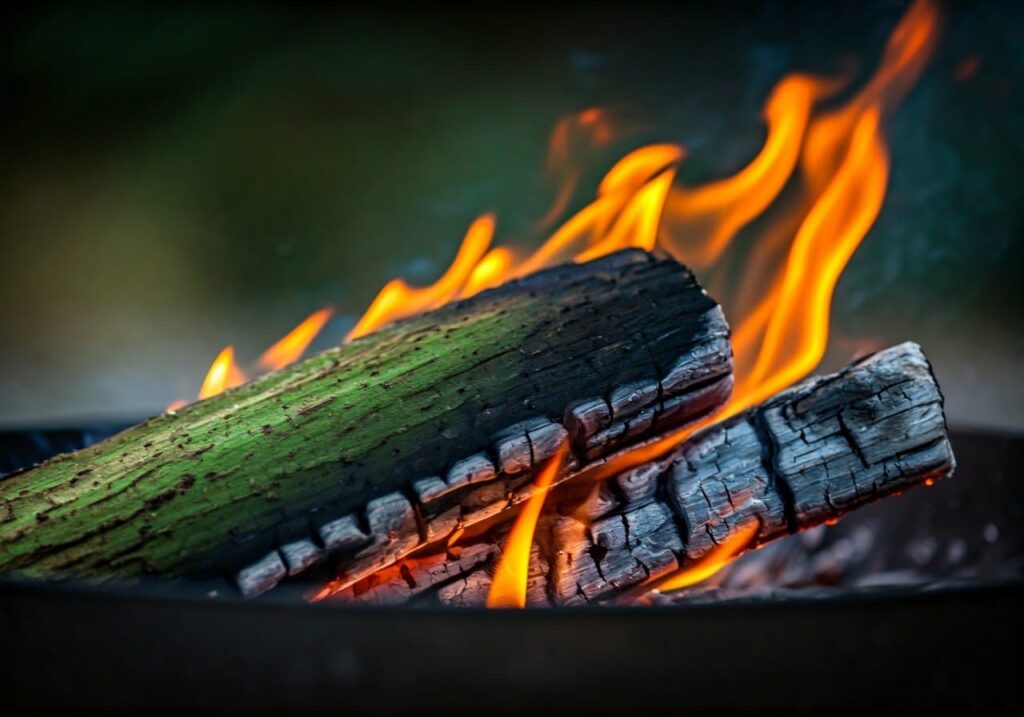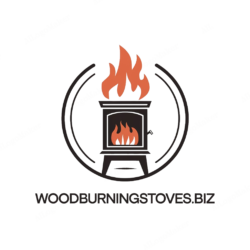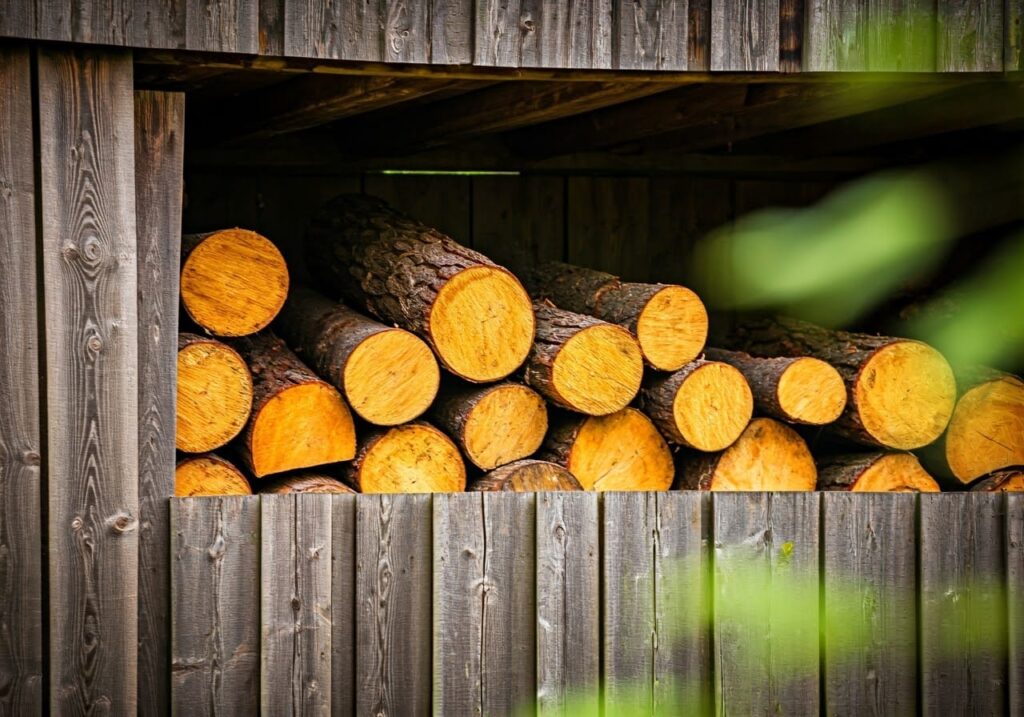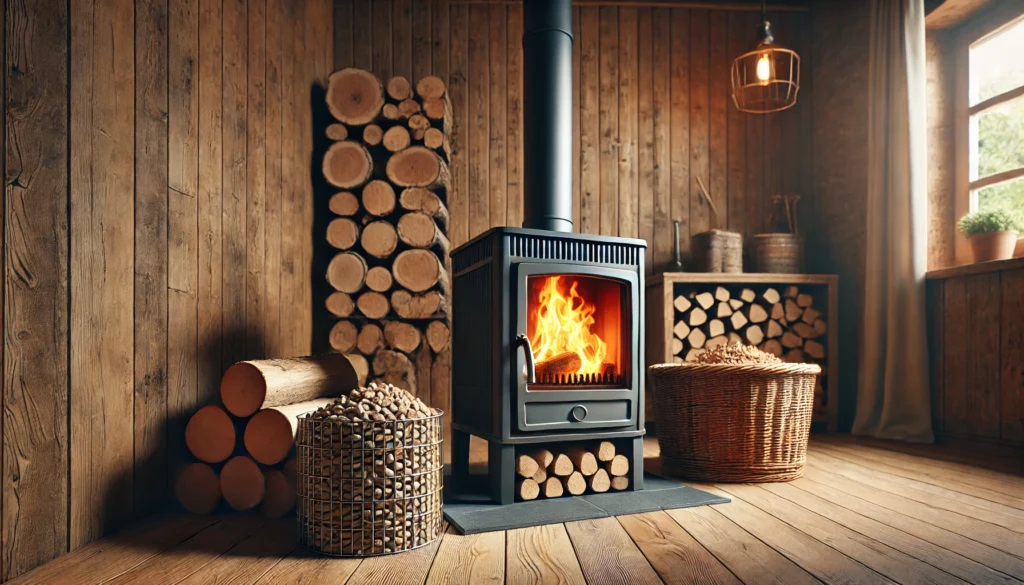Understanding the implications of burning unseasoned wood, fresh-cut logs, or green timber in your wood-burning stove is crucial for both safety and efficiency. This comprehensive guide explores the challenges and risks of using wet wood, freshly cut firewood, and high-moisture content timber in your wood burner or wood-burning appliance.

Moisture Content Comparison in Wood Types
| Wood Condition | Moisture % | BTU Output | Smoke Production | Creosote Build-up | Burning Efficiency |
|---|---|---|---|---|---|
| Green Wood | 45-60% | Very Low | Excessive | Severe | 30-40% |
| Partially Seasoned | 25-45% | Moderate | High | Moderate | 50-60% |
| Properly Seasoned | 15-20% | Maximum | Minimal | Minimal | 75-85% |
| Kiln Dried | 10-15% | Optimal | Very Low | Minimal | 80-90% |
| Over-dried | <10% | High | Low | Low | 70-80% |
Understanding Green Wood Characteristics
Fresh-cut timber, also known as green wood or unseasoned firewood, contains significantly higher moisture content than properly seasoned logs. This moisture affects multiple aspects of your wood-burning experience:
Heat Output Impact
When burning wet wood or unseasoned timber:
- Energy wasted evaporating moisture
- Reduced combustion temperature
- Lower overall heating efficiency
- Inconsistent heat production
Smoke and Emissions
Green wood burning characteristics include:
- Dense, white smoke production
- Higher particulate emissions
- Increased air pollution
- Potential environmental violations
Safety Concerns
Burning green wood poses significant safety concerns for your home and heating system. A major risk is Creosote Formation, which can have devastating consequences. Learn how burning unseasoned logs can lead to increased hazards and maintenance issues, compromising both safety and appliance performance
Creosote Formation
Burning unseasoned logs leads to:
- Accelerated creosote accumulation
- Increased chimney fire risk
- Reduced flue efficiency
- More frequent cleaning requirements
Stove Performance Issues
Using fresh-cut wood can cause:
- Incomplete combustion
- Damaged fire bricks
- Corroded chimney liner
- Compromised catalytic converter
Emergency Use Scenarios
When You Must Burn Green Wood
Although not ideal, sometimes circumstances necessitate burning green wood. To minimize risks and optimize efficiency, employ strategic techniques. Discover how adapting your splitting and burning practices can help mitigate the drawbacks of using unseasoned timber, ensuring a safer and more effective burning experience. If circumstances force you to use unseasoned timber:
Splitting Techniques:
- Cut pieces smaller than usual
- Maximize surface area exposure
- Mix with seasoned wood
- Allow maximum airflow
Temperature Management:
- Maintain higher firebox temperatures
- Increase air intake settings
- Monitor flue temperatures
- Check smoke density
Alternative Solutions
Avoid the pitfalls of burning green wood by exploring better, more efficient alternatives. Whether you need a temporary fix or a long-term solution, consider these options to ensure safer, more environmentally friendly, and cost-effective heating. Ditch the drawbacks of fresh-cut timber with these practical substitute
Better Options Than Burning Green Wood
Consider these alternatives to fresh-cut timber:
Emergency wood sources::
- Local firewood suppliers
- Wood processing facilities
- Tree service companies
- Construction offcuts (untreated)
Temporary heating options:
- Electric space heaters
- Propane heaters
- Wood pellet stoves
- Biomass alternatives
Long-term Planning
Break the cycle of relying on green wood with proactive long-term planning. By adopting strategic wood storage and purchasing habits, you’ll ensure a consistent supply of properly seasoned firewood, enhancing safety, efficiency, and overall heating experience. Plan ahead with these forward-thinking solutions.
Avoiding Green Wood Usage
Implement these strategies:
Wood Storage Management:
- Rotate stock regularly
- Maintain emergency supply
- Track seasoning progress
- Monitor moisture levels
Purchasing Strategy:
- Buy wood year-round
- Maintain supplier relationships
- Stock up during off-season
- Consider bulk purchases
Environmental Impact
Burning green wood has far-reaching ecological consequences, compromising both local air quality and global sustainability. Understand the environmental footprint of your heating choices and discover how opting for properly seasoned wood can significantly mitigate these adverse effects, contributing to a healthier environment.
Ecological Considerations
Burning green wood affects:
Air Quality:
- Increased pollution
- Higher carbon emissions
- Particulate matter release
- Smoke nuisance
Efficiency:
- Wasted energy
- Higher consumption
- Increased wood usage
- Resource depletion
Technical Aspects
Delve into the technical aspects of wood combustion, where moisture content plays a crucial role. Understanding the science behind optimal burning ranges and temperature effects can help you unlock efficient, effective, and safe heating. Discover how the numbers impact your wood-burning experience.
Moisture Content Science
Understanding the numbers:
Optimal Burning Ranges:
- Green wood: 45-60% moisture
- Seasoned wood: 15-20% moisture
- Ideal burning: 15-17% moisture
Temperature Effects:
- Combustion efficiency
- Heat transfer rates
- Burning duration
- Energy output
Practical Solutions
Facing the challenge of burning green wood? Don’t compromise on safety or efficiency. Employ these practical, hands-on solutions to enhance the burn quality of unseasoned wood. From preparation methods to clever mixing strategies, optimize your green wood usage with these actionable techniques.
Working with Green Wood
If you must use unseasoned wood:
Preparation Methods:
- Indoor pre-drying
- Forced air exposure
- Dehumidified storage
- Solar kiln techniques
Mixing Strategies:
- Blend with dry wood
- Layer different moisture levels
- Alternate green and seasoned
- Progressive loading technique
Economic Impact
Burning green wood can ignite a cascade of unforeseen expenses, affecting your wallet in both obvious and subtle ways. Understand the full economic impact of using unseasoned wood, from immediate outlays to long-term financial repercussions, to make informed decisions about your heating choices.
Cost Considerations
Financial implications include:
Direct Costs:
- Increased wood consumption
- Higher maintenance expenses
- More frequent cleaning
- Potential repairs
Indirect Costs:
- Reduced efficiency
- Higher labor requirements
- Increased wear and tear
- Future replacement needs
Conclusion
While burning green wood in your wood stove is possible, it’s far from ideal and should be avoided whenever possible. The reduced efficiency, increased maintenance requirements, and potential safety risks make it a poor choice for regular use. Focus instead on proper wood seasoning and maintaining an adequate supply of properly dried firewood for your wood-burning appliance.
Remember that investing in properly seasoned firewood or taking the time to season green wood yourself will always provide better results in your wood-burning stove or wood burner. The extra effort in preparation will be rewarded with better heat output, safer operation, and more efficient fuel consumption.


